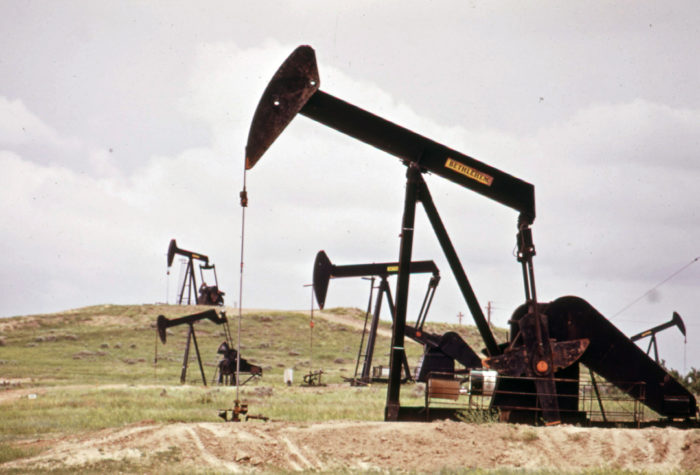
Image Credit: U.S. National Archives via Wikimedia Commons
A Massachusetts-based start-up has leased an abandoned natural gas well in Texas and raised $1 million in seed money to test an experimental way of storing energy that ultimately could help businesses avoid burdensome demand charges for electricity.
According to an article posted at Forbes.com, Aaron Mandell and Howard Schmidt founded Quidnet Energy three years ago to explore the potential of using old oil and gas wells to store high-pressure water as an energy source.
Water pumped into the wells at high pressure — 600 pounds per square inch — would later be released to power turbines to produce electricity.
“Instead of having oil or natural gas in these rock fissures, we will pump water in,” Mandell told Forbes.com. “When you continue to pump water, you are basically compressing the rocks, which act like a large spring. When we then open that well, the rocks will force the water out of the well at a high pressure to generate electricity.”
Mandell is the chief executive of AltaRock Energy, which engineers geothermal power generating stations. Schmidt, who developed the water storage technology, is an engineer with Saudi Aramco.
Their experimental station in Texas is located in Erath County, about 80 miles west of Fort Worth, where the fledgling company has leased a 5,000-foot-deep well and is installing a turbine, Forbes reports. The geology of the site is key: the rock formations into which the well is drilled need to be impermeable so water pumped into the well doesn’t escape and lose pressure.
Similar to a pumped hydro storage
Quidnet’s plan is similar to an energy storing technical called pumped hydroelectric storage, in which water is pumped uphill to a reservoir and then released to produce electricity with a turbine.
The Forbes report said the test well will be able to hold 5,000 barrels of water (about 215,000 gallons) and is designed to charge and discharge in blocks of four to eight hours. Quidnet plans to run the project until the end of the year to see how it works and help it calculate how much a commercial-scale project would cost.
Energy storage is emerging as an area of active research and development. In California, developers are building two pilot net-zero energy neighborhoods in which houses are equipped with batteries to store solar electricity produced during the day and redistribute it later.
Nissan and General Motors recently announced plans to re-purpose batteries from electric vehicles into energy storage units.
In these and other projects, one intent is to help businesses avoid steep demand charges — the high rates utilities charge business and industrial customers based on their peak demand for power. Stored electricity can help offset peak power loads. In residential storage plans, excess power produced during the day can help reduce an early evening surge in demand on the grid.
Pump tests are underway now
Mandell said by email that pumps are currently being tested and the turbine should be installed within the next couple of months.
“The elegance of mimicking pumped hydro is that is has a round-trip efficiency of 75 percent — that means that 75 percent of the electrical energy used to pump water into the reservoir is recovered as useable electricity after it runs through the turbine generator,” Mandell said. “So you can store electricity during times of low demand, but more importantly, you can use storage to curtail over-generation when solar energy peaks during the day.”
He said once the demonstration is complete, the company would move toward building a small commercial facility.
Initially, he added, the closed-loop system will use fresh water, but ultimately, it would be possible to use salt water or brackish water.
Weekly Newsletter
Get building science and energy efficiency advice, plus special offers, in your inbox.














One Comment
The two most efficient storage technologies are:
A recent study from Stanford in 2013 by Charles Barnhart and Sally Benson (Energy and Environment Science issue4 2013) rated different electrical storage devices by ratio called ESOI energy stored on investment. How much energy the device requires to make vs the total lifetime storage. The higher the ESOI number the better. Pump compressed air into caverns is the winner at 240. Next, pumped hydro 210. Then the next step down is a doozy, Lithium (6000 cycles) is 10!!!. Vanadium redox 3, lead acid 2. So yes these guys are on to something. The efficiency is about 75% maybe, but the cycle life is at least 30,000 and little other expense. We'll see how this unfolds.
Log in or create an account to post a comment.
Sign up Log in